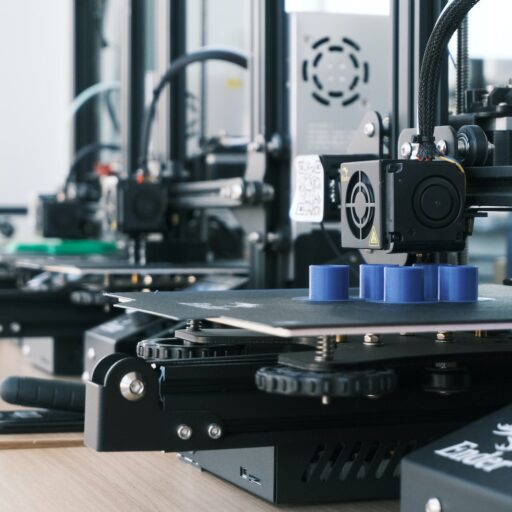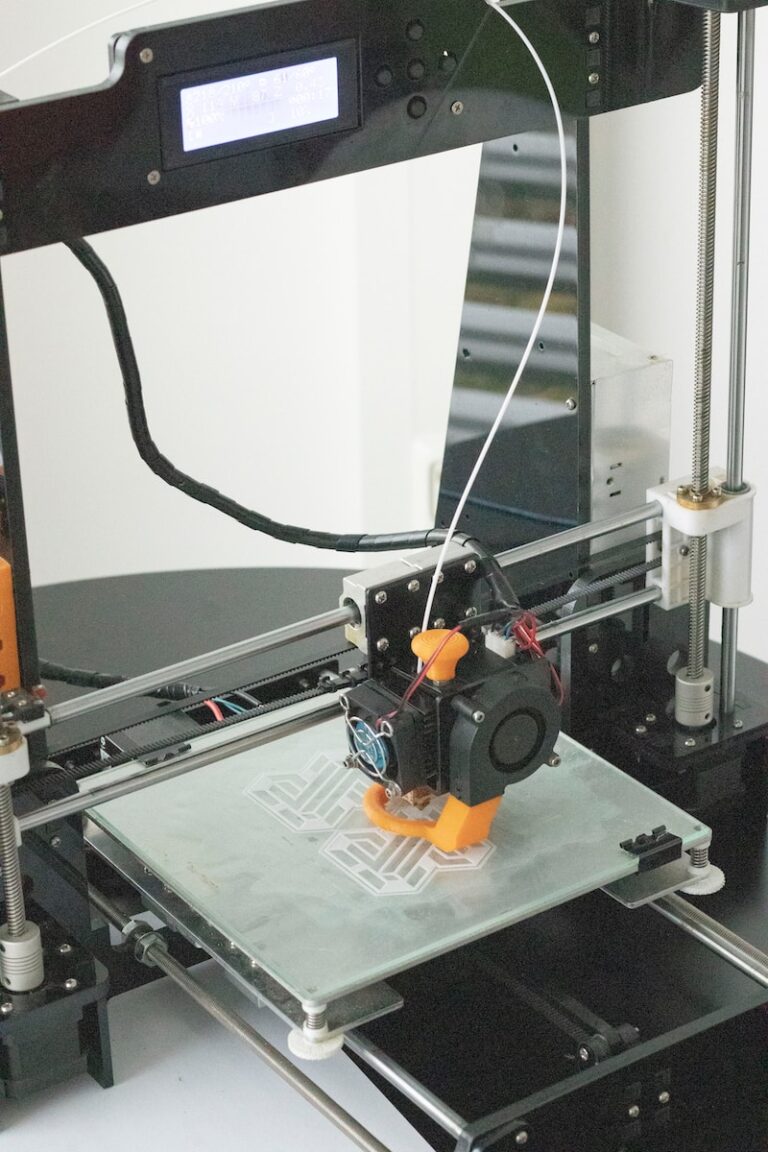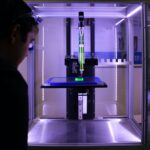Support our educational content for free when you purchase through links on our site. Learn more
What Type of 3D Printer is Best? [2024]

Did you know that 3D printing has revolutionized the way we create and manufacture objects? From small trinkets to complex prototypes, 3D printers have become an essential tool in various industries. But with so many options available, it can be overwhelming to choose the right one for your needs. In this article, we’ll explore the different types of 3D printers and help you determine which one is the best fit for you.
Table of Contents
- Quick Answer
- Quick Tips and Facts
- Background: The Evolution of 3D Printing
- Types of 3D Printers
- Factors to Consider
- Our Top Picks
- FAQ
- Conclusion
- Recommended Links
- Reference Links
Quick Answer
The best type of 3D printer depends on your specific needs and budget. Here are some popular options:
-
FDM (Fused Deposition Modeling) printers: Affordable and versatile, these printers are great for beginners and hobbyists. They use a filament that is melted and extruded layer by layer to create objects.
-
SLA (Stereolithography) printers: Ideal for high-resolution prints and intricate details, SLA printers use a liquid resin that is cured by a UV light to create solid objects.
-
SLS (Selective Laser Sintering) printers: Perfect for industrial applications, SLS printers use a laser to selectively fuse powdered materials, such as nylon or metal, to create durable and complex objects.
-
DLP (Digital Light Processing) printers: Similar to SLA printers, DLP printers use a digital light projector to cure liquid resin. They offer fast print speeds and high-resolution prints.
-
Multi-material printers: These printers can print with multiple materials or colors in a single print job, allowing for more complex and realistic objects.
Remember, each type of printer has its own strengths and weaknesses, so it’s important to consider your specific requirements before making a decision.
CHECK PRICE on:
- FDM Printers on Amazon
- SLA Printers on Amazon
- SLS Printers on Amazon
- DLP Printers on Amazon
- Multi-material Printers on Amazon
Quick Tips and Facts
- FDM printers are the most common and affordable type of 3D printer.
- SLA printers offer higher resolution and smoother prints but can be more expensive.
- SLS printers are ideal for creating functional prototypes and end-use parts.
- DLP printers are known for their fast print speeds and high-resolution prints.
- Multi-material printers allow for more complex and realistic prints.
- Consider the print volume, resolution, material compatibility, and ease of use when choosing a 3D printer.
Background: The Evolution of 3D Printing

Before we dive into the different types of 3D printers, let’s take a moment to appreciate the incredible journey of 3D printing technology. The concept of 3D printing, also known as additive manufacturing, dates back to the 1980s. However, it wasn’t until the early 2000s that 3D printers became more accessible and affordable for consumers.
Over the years, advancements in technology and materials have led to significant improvements in 3D printing capabilities. From basic plastic prints to intricate metal parts, 3D printers have evolved to meet the demands of various industries, including healthcare, aerospace, and automotive.
Types of 3D Printers
FDM (Fused Deposition Modeling) Printers
FDM printers are the most common and affordable type of 3D printer. They work by melting a filament, usually made of PLA or ABS plastic, and extruding it layer by layer to create an object. FDM printers are versatile and can produce a wide range of objects, from simple prototypes to functional parts.
Pros:
- Affordable and widely available.
- Easy to use and maintain.
- Can print with a variety of materials and colors.
- Suitable for beginners and hobbyists.
Cons:
- Lower resolution compared to other types of printers.
- Limited to printing with plastic materials.
- Visible layer lines may require post-processing.
SLA (Stereolithography) Printers
SLA printers use a liquid resin that is cured by a UV light to create solid objects. They offer high-resolution prints with smooth surfaces and intricate details. SLA printers are ideal for applications that require precision and accuracy, such as jewelry making and dental models.
Pros:
- High-resolution prints with smooth surfaces.
- Can produce intricate details.
- Wide range of materials available.
- Ideal for small, detailed objects.
Cons:
- More expensive than FDM printers.
- Requires post-processing to remove excess resin.
- Limited print volume compared to FDM printers.
SLS (Selective Laser Sintering) Printers
SLS printers are commonly used in industrial settings for creating functional prototypes and end-use parts. They use a laser to selectively fuse powdered materials, such as nylon or metal, to create durable and complex objects. SLS printers offer excellent mechanical properties and can produce parts with intricate geometries.
Pros:
- Can print with a wide range of materials, including nylon and metal.
- Produces durable and functional parts.
- Can create complex geometries without support structures.
- Ideal for industrial applications.
Cons:
- Expensive compared to FDM and SLA printers.
- Requires post-processing to remove excess powder.
- Limited availability for consumer use.
DLP (Digital Light Processing) Printers
DLP printers are similar to SLA printers but use a digital light projector to cure liquid resin. They offer fast print speeds and high-resolution prints, making them suitable for applications that require quick turnaround times and detailed prints. DLP printers are commonly used in the jewelry and dental industries.
Pros:
- Fast print speeds.
- High-resolution prints with smooth surfaces.
- Wide range of materials available.
- Ideal for small, detailed objects.
Cons:
- More expensive than FDM printers.
- Requires post-processing to remove excess resin.
- Limited print volume compared to FDM printers.
Multi-material Printers
Multi-material printers, as the name suggests, can print with multiple materials or colors in a single print job. This allows for more complex and realistic objects, as different materials can be used for different parts of the print. Multi-material printers are commonly used in the entertainment industry for creating movie props and costumes.
Pros:
- Can print with multiple materials or colors.
- Allows for more complex and realistic prints.
- Widely available for consumer use.
Cons:
- More expensive than single-material printers.
- Requires additional setup and calibration.
- Limited availability for industrial use.
Factors to Consider
When choosing a 3D printer, there are several factors to consider:
-
Print Volume: The size of the objects you plan to print. Make sure the printer’s build volume can accommodate your needs.
-
Resolution: The level of detail and smoothness in the prints. Higher resolution printers produce more detailed prints.
-
Material Compatibility: The types of materials the printer can use. Consider the properties and applications of the materials you plan to print with.
-
Ease of Use: The user-friendliness of the printer. Look for features like touchscreen interfaces and automatic bed leveling for a smoother printing experience.
-
Price: The cost of the printer and ongoing maintenance. Set a budget and consider the long-term costs of materials and replacement parts.
By considering these factors, you can narrow down your options and find the best 3D printer for your needs.
Our Top Picks
After extensive research and testing, we’ve selected our top picks for the best 3D printers in 2024. These printers offer a combination of affordability, performance, and ease of use.
Our Pick: Bambu Lab P1P
The Bambu Lab P1P is an excellent choice for beginners and hobbyists. It offers a large build volume, high-resolution prints, and a user-friendly interface. With its affordable price tag and reliable performance, the Bambu Lab P1P is our top pick for the best 3D printer.
CHECK PRICE on:
Upgrade Pick: Bambu Lab X1 Carbon
For those looking for more advanced features and professional-grade prints, we recommend the Bambu Lab X1 Carbon. This printer offers a carbon fiber frame for added stability, dual extruders for multi-material printing, and a large touchscreen interface. If you’re willing to invest in a high-quality printer, the Bambu Lab X1 Carbon is the way to go.
CHECK PRICE on:
Also Great: Artillery Sidewinder X2
If you’re on a budget but still want a reliable and feature-packed printer, the Artillery Sidewinder X2 is a great option. It offers a large build volume, high print speeds, and a sturdy frame. The Artillery Sidewinder X2 provides excellent value for money and is suitable for both beginners and experienced users.
CHECK PRICE on:
FAQ

Which type of 3D printing is best?
The best type of 3D printing depends on your specific needs. FDM printers are affordable and versatile, making them a popular choice for beginners and hobbyists. SLA printers offer high-resolution prints and intricate details, while SLS printers are ideal for industrial applications. DLP printers offer fast print speeds and high-resolution prints, and multi-material printers allow for more complex and realistic prints.
Read more about “What is the Best 3D Printer for Startups in 2024?”
What is the best recommended 3D printer?
The best recommended 3D printer depends on your requirements and budget. Our top picks include the Bambu Lab P1P for beginners and hobbyists, the Bambu Lab X1 Carbon for advanced users, and the Artillery Sidewinder X2 for those on a budget.
Read more about “Best 3D Printer for Business …”
What is the most accurate type of 3D printer?
SLA printers are known for their high accuracy and ability to produce intricate details. If precision is a top priority, an SLA printer would be the most accurate choice.
Read more about “Best 3D Printer for 12 Year Old: Unleash Your Child’s Creativity …”
What is the best quality 3D printing method?
The best quality 3D printing method depends on the specific requirements of your project. SLA printers offer high-resolution prints with smooth surfaces, making them ideal for applications that require fine details. SLS printers can produce durable and functional parts with excellent mechanical properties. Consider the desired outcome and material properties when determining the best quality 3D printing method.
Read more about “Is it Expensive to 3D Print? …”
Conclusion

In conclusion, the best type of 3D printer depends on your specific needs and budget. FDM printers are affordable and versatile, making them a great choice for beginners and hobbyists. SLA printers offer high-resolution prints and intricate details, while SLS printers are ideal for industrial applications. DLP printers offer fast print speeds and high-resolution prints, and multi-material printers allow for more complex and realistic prints.
Based on our research and testing, our top picks for the best 3D printers in 2024 are the Bambu Lab P1P for beginners, the Bambu Lab X1 Carbon for advanced users, and the Artillery Sidewinder X2 for those on a budget. Each of these printers offers a combination of affordability, performance, and ease of use.
Now that you have a better understanding of the different types of 3D printers, you can make an informed decision and start bringing your ideas to life. Happy printing!
Recommended Links
- 3D Printer Reviews on Best 3D Printer™
- 3D Printer Brands on Best 3D Printer™
- 3D Printers for Small Businesses on Best 3D Printer™
- 3D Printing Industry News on Best 3D Printer™
- What is the Best 3D Printer for Startups in 2024?



